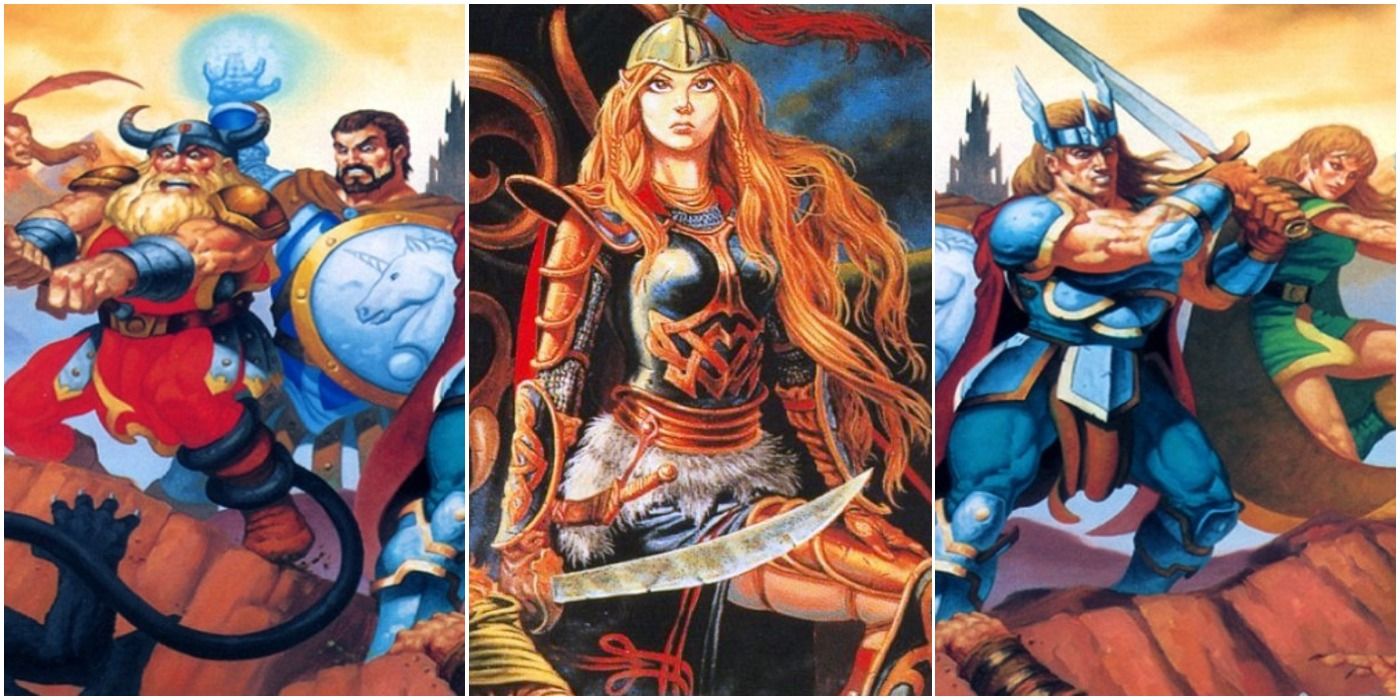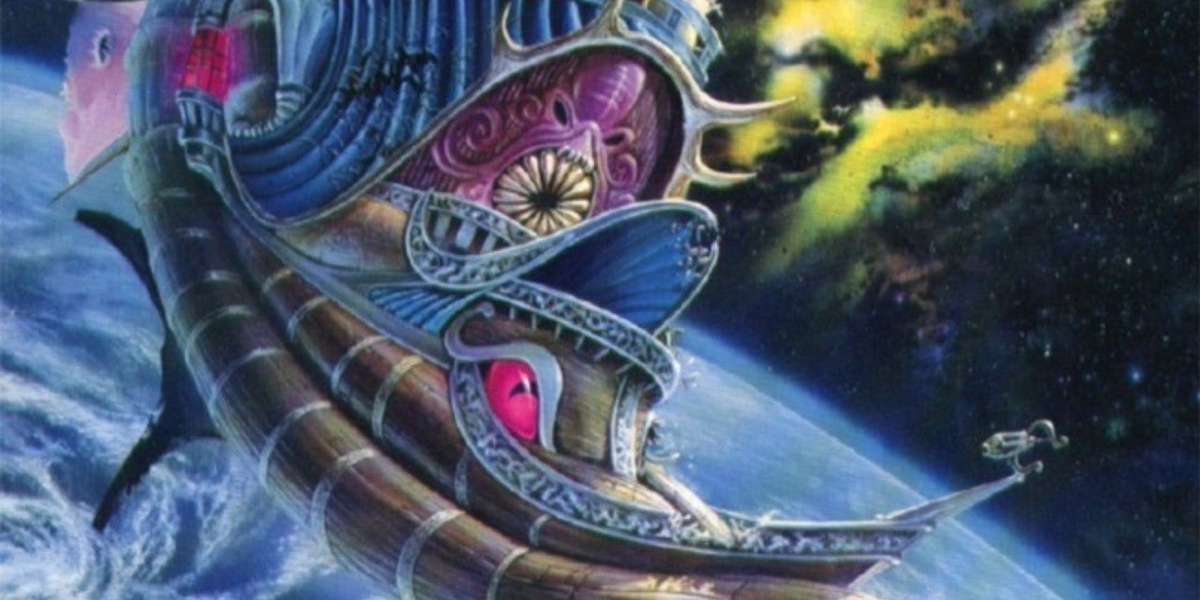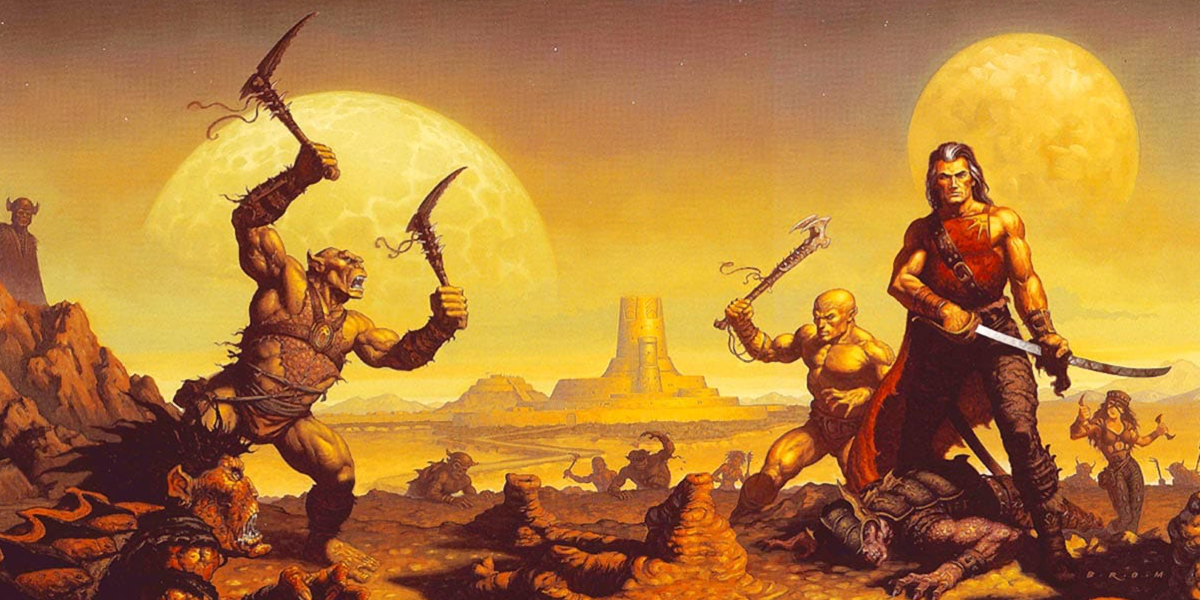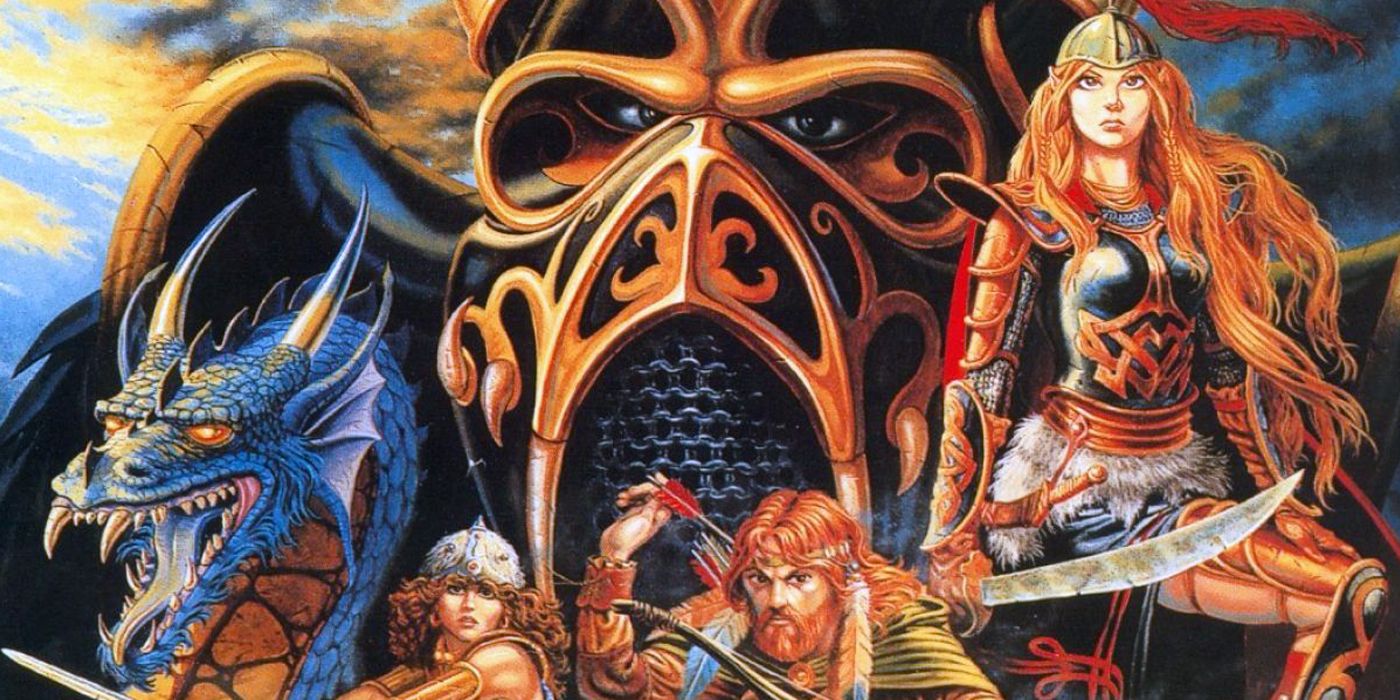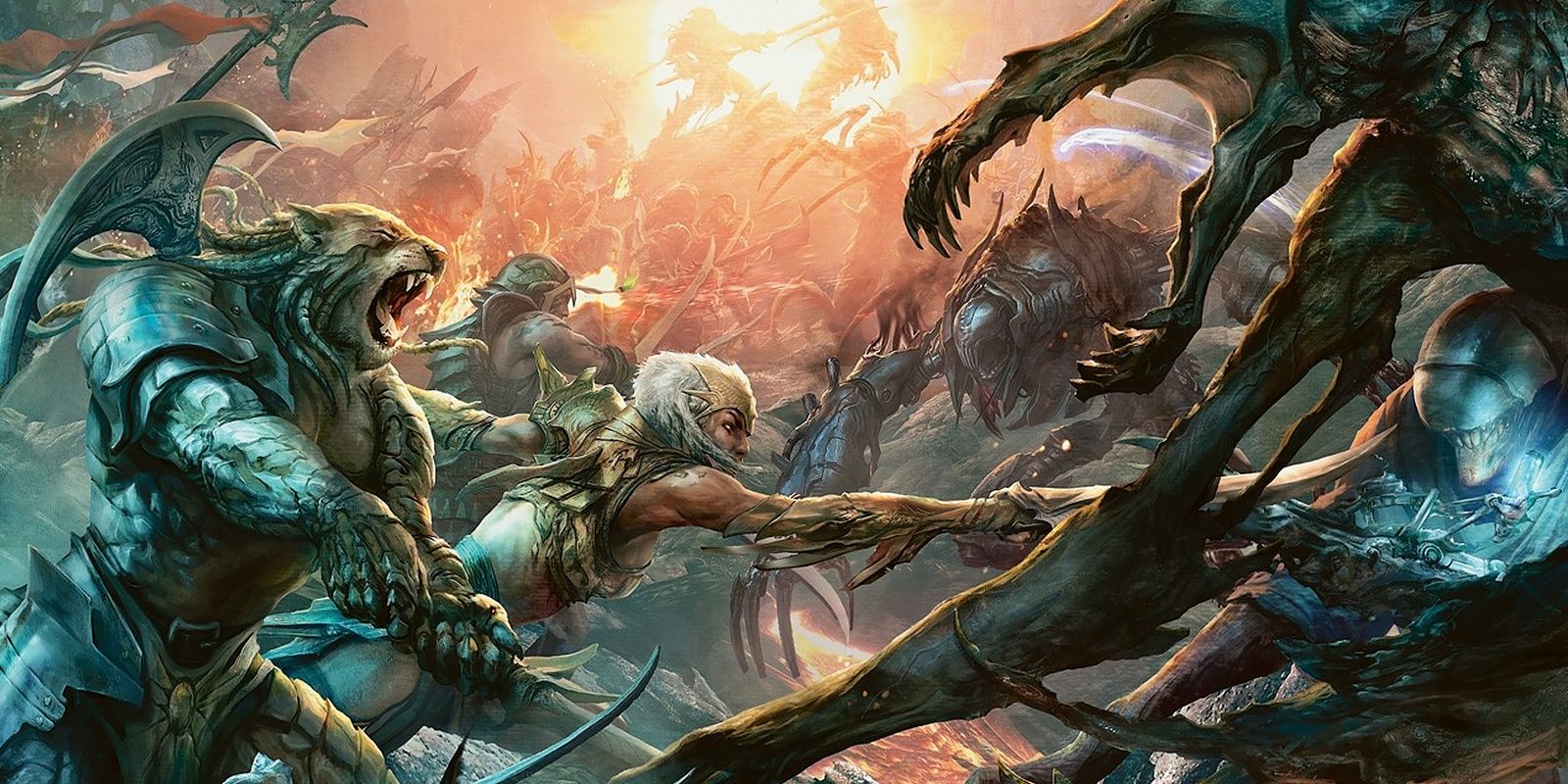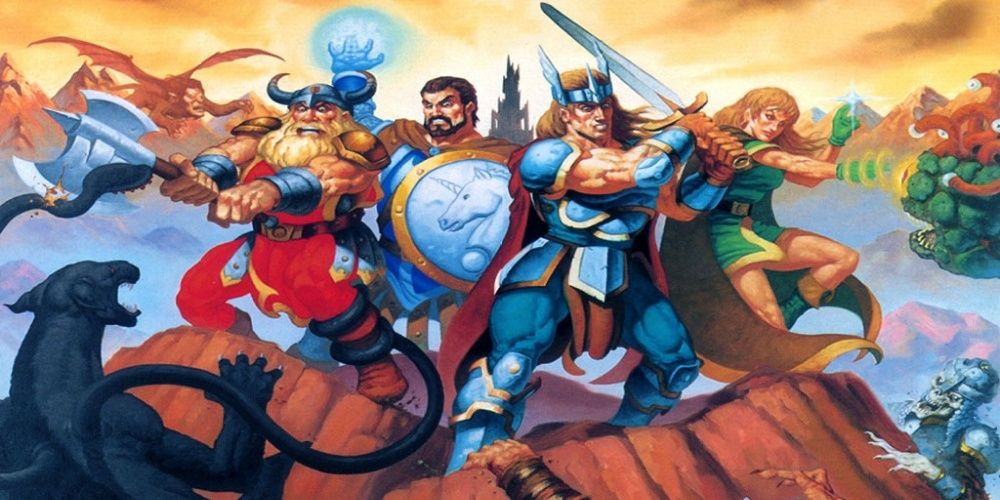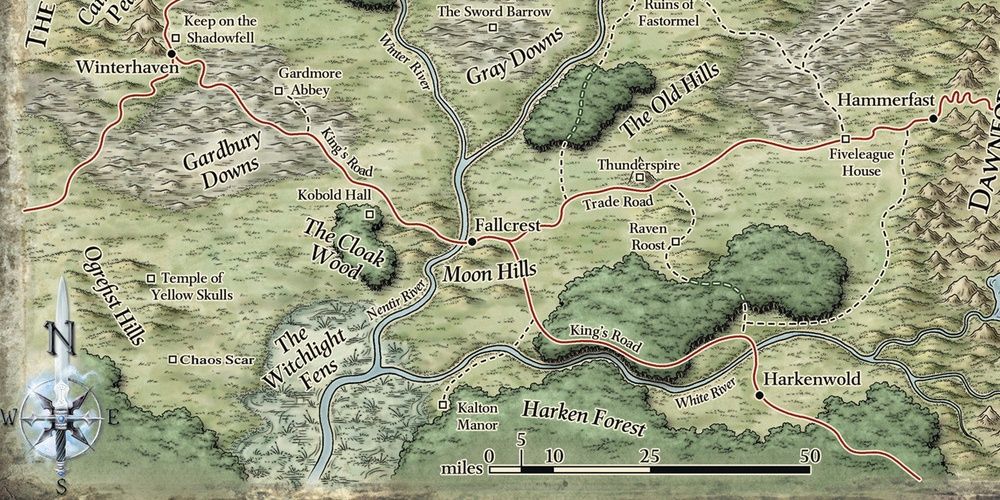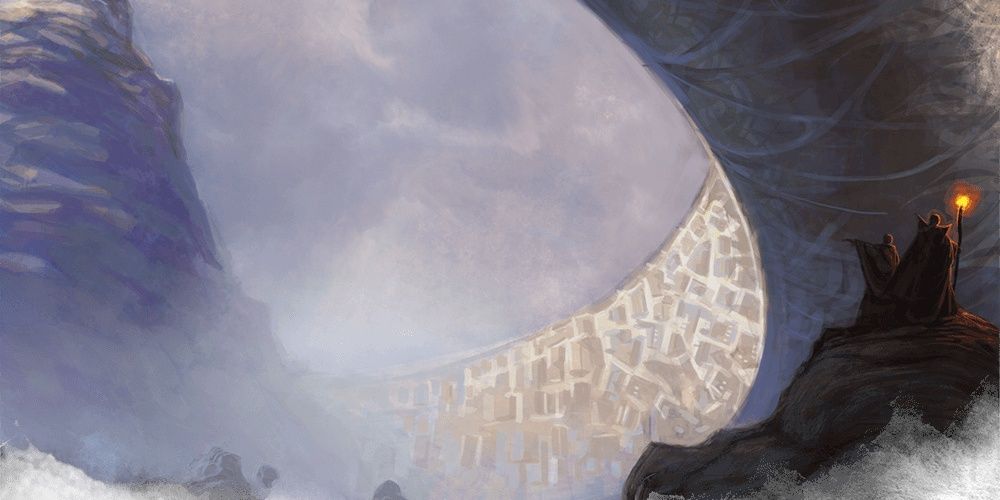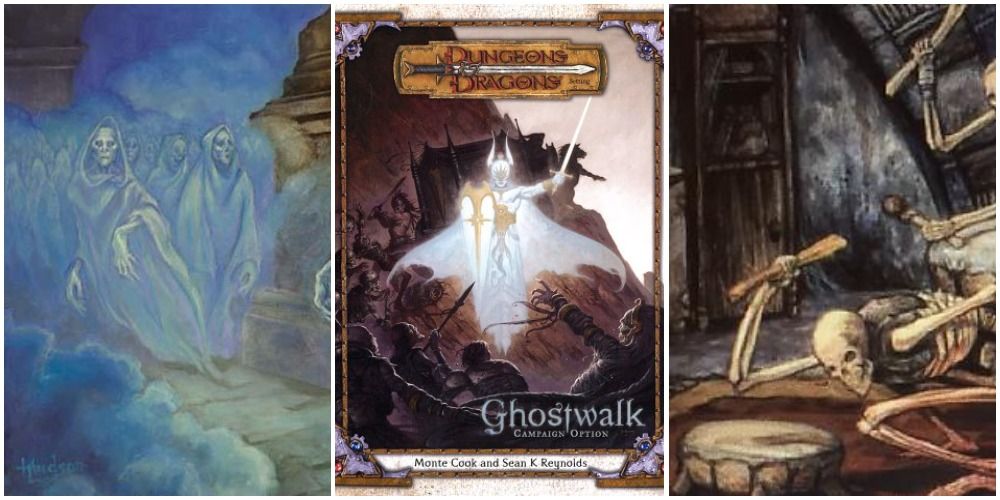Dungeons and Dragons can be played in any number of different settings. Many Dungeon Masters and groups like to create their own setting, inventing civilizations and histories to match their stories. Others like to play in established worlds, full of recorded lore to inspire future adventures.
The Forgotten Realms is the main and default setting for 5th Edition Dungeons and Dragons, and several other settings have been published for the game as well. But D&D has a rich history of settings going back to the very beginning, and it would be exciting to see some of these modernized for the current edition.
8 Spelljammer Takes D&D To Space
Spelljammer was a science-fantasy setting for D&D first released in 1989, written by Jeff Grubb. It takes its name from the spelljamming helms, devices that could turn otherwise non-spaceworthy ships and vehicles into starships. Scattered throughout space were crystal spheres that contained entire planetary systems. It featured classic D&D races like humans and dwarves but also introduced the militant giff, humanoid hippopotami. Classic D&D monsters also got a new spin. Spelljammer's illithids, for instance, were less domineering in nature and instead existed as a merchant society. The giff's inclusion in Mordenkainen's Tome of Foes bodes well for Spelljammer's eventual adaptation to 5e.
7 Things Get Scary In Dark Sun
This post-apocalyptic setting was first published in 1991 and was later adapted for 4th Edition Dungeons and Dragons. It was first envisioned as a totally original world completely devoid of familiar fantasy creatures but eventually opted to include elves, dwarves, and dragons in new and warped forms. Dark Sun takes place in the world of Athas, a desert world ruled over by powerful sorcerer-kings. Metal is rare on Athas, leading many to develop innovative weapons and tools made from bone or rock. Magic of all kinds was radically different in Dark Sun. Arcane spellcasting, for instance, drew life force from the planet or its inhabitants, making it incredibly destructive. Dark Sun has been referenced a handful of times in 5e materials, so it's likely it will see an adaptation at some point.
6 Dragonlance Is Familiar But With A Strong Identity
This setting is not as off-the-walls as Dark Sun or Spelljammer, but it is full of potential for interesting gameplay nonetheless. Created by writing team Tracy Hickman and Margaret Weis in 1982 with the explicit intention of highlighting the dragons of Dungeons and Dragons, Dragonlance was used for numerous adventures and novels throughout the 1980s and 1990s.
The setting gets its name from powerful weapons called dragonlances, the only weapons capable of killing dragons without the use of magic. Dragonlance has a unique aesthetic and rich history to draw from, despite being a pretty down-the-middle fantasy world. It would be a great opportunity for players who want basic fantasy but aren't crazy about the Forgotten Realms.
5 Mirrodin Could Be The Next Big Thing From Magic
Mirrodin is not technically a classic D&D setting, rather hailing from another Wizards of the Coast property, Magic: the Gathering. But D&D has recently adapted several Magic settings, so Mirrodin could be the next candidate. Mirrodin is an artificial world, created by a powerful wizard and populated with creatures stolen from other planes. It is entirely made of metal, and its denizens must contend with this bizarre ecology in order to survive. Mirrodin was eventually overtaken by the Phyrexians and renamed New Phyrexia, but a resistance movement still exists there. Most of the Magic settings released for D&D have either been new sets or sets currently being revisited, but Mirrodin would be a great first stop in a journey back in time to older settings.
4 Mystara Would Make A Great Starter Setting
Mystara was the default setting for the "Basic" version of D&D throughout the 1980s and 1990s, as opposed to the "Advanced" version. Mystara is a classic fantasy world, complete with elves, dwarves, dragons, and wizards. One of its most interesting features is the Hollow World, an entire world within the planet lit by a red star. Mystara is generally lighter in tone than many D&D settings and could be a good place to set future introductory content for 5e. Since Wizards of the Coast stopped producing Mystara content before the release of 3rd Edition Dungeons and Dragons, most players today will be familiar with it only through games like Dungeons & Dragons: Chronicles of Mystara.
3 The Nentir Vale Keeps The Scope Small
The Nentir Vale was the default setting presented in 4th Edition Dungeons and Dragons. It was centered around the town of Fallcrest, a trading hub built on the ruins of an ancient empire. 4e introduced the "points of light" campaign structure, a world where civilization had fallen and left behind scattered points of light in a dangerous sea of evil.
This structure is similar to how many D&D games are already run but gives a useful name to the concept. The Nentir Vale was a very manageable size for an introductory game, spanning only a few hundred miles rather than a continent. 5e could easily adapt this classic location to give new players a small sandbox to play around in.
2 Planescape Is Metal And Weird
Planescape originally functioned as a planar guidebook for Advanced Dungeons and Dragons, a setting for players to explore beyond the confines of the material world. Designer David "Zeb" Cook was tasked with creating an extradimensional world free from the words "demon" and "devil" in order to ease concerns from the Satanic Panic active at the time. He took inspiration from musicians like Philip Glass and artists like Giovanni Piranesi and Brian Froud. Planescape is a dark and gritty world filled with planar overlaps, allowing players to traverse the many dimensions of existence. Planescape introduced the now-iconic Sigil, the City of Doors. This ring-shaped settlement was a crossroads for many worlds.
1 Ghostwalk Is Like One Big Dungeon
Ghostwalk was a small-scale setting designed by Monte Cook and Sean K. Reynolds to be published in a single volume. It centered on the city of Manifest, a giant mausoleum-city built atop the Veil of Souls, a place through which the spirits of the dead must pass to reach the afterlife. The caverns beneath Manifest are full of monsters, but also full of treasure. This attracts adventurers seeking to prove themselves and seize the wealth buried within. Ghostwalk is another bite-sized setting, perfect for players who want a self-contained area with a strong thematic and aesthetic identity, and would be perfect for a 5e adaptation.

